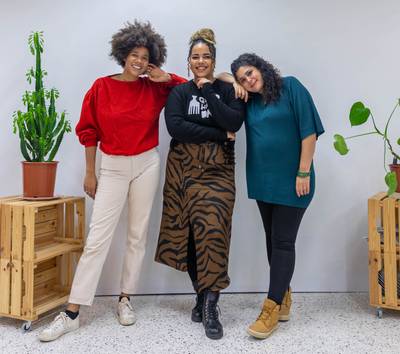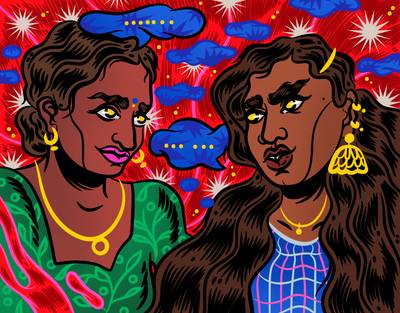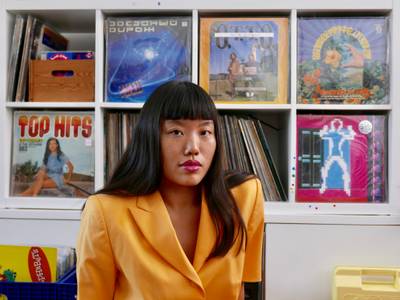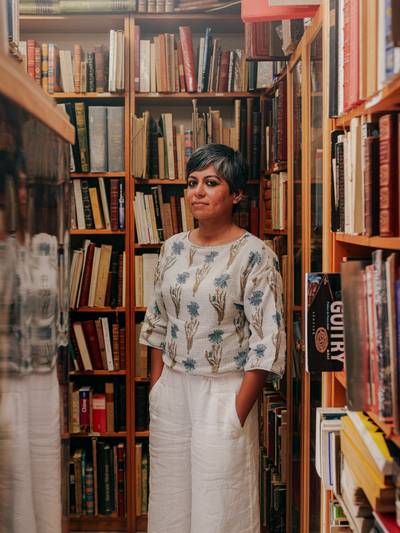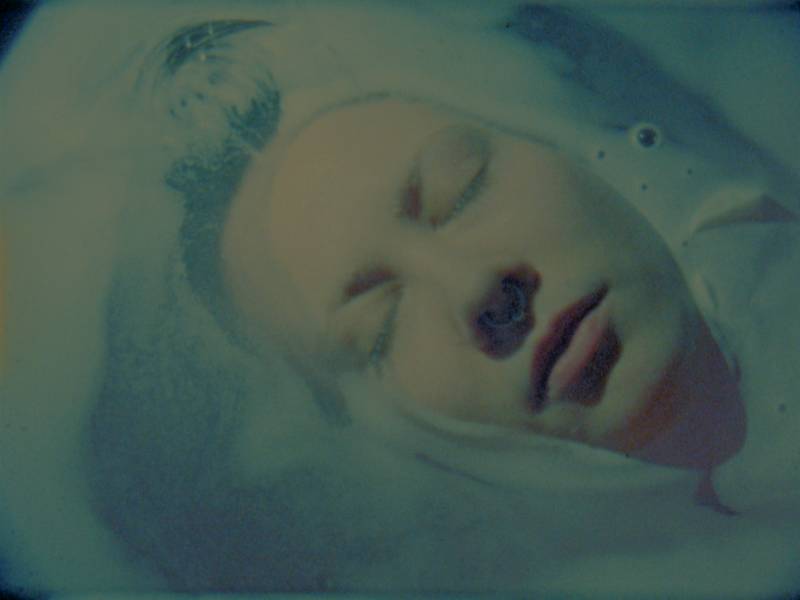

Image: Louise Hollerup
Orlan Ohtonen is a freelance curator and writer based in Helsinki, Finland. They are a Co-Founder of the curatorial platform ‘Feminist Culture House’; one half of queer feminist curatorial duo ‘nynnyt’; and a Co-Founder of feminist and anti-racist workspace Poimu. Their curatorial research is currently focused on what could be learned from trans and queer communality in relation to conviviality and cultural spaces.
I was really happy to be invited to interview filmmaker August Joensalo about their short film, space is quite a lot of things, as it offered a chance to get to know them and learn about their thinking behind the documentary. What better way to spend time with a fellow trans artist than drinking tea, petting a dog, and discussing the intimate experiences of gender?
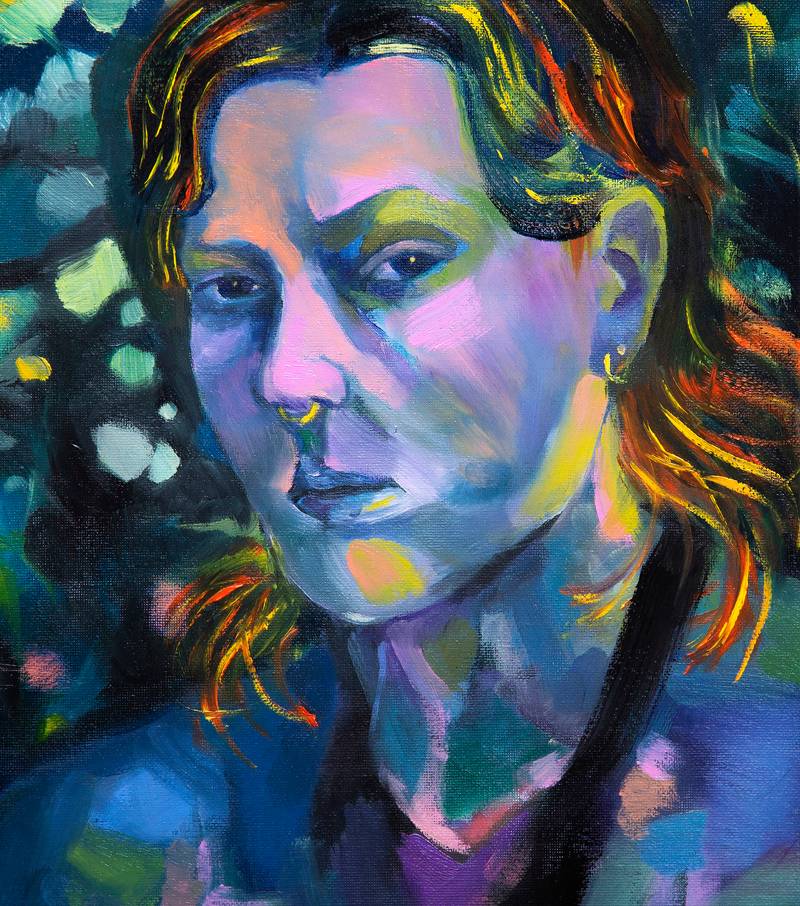

Portrait of August Joensalo by Nova Kaspia
ORLAN: Could you first talk a bit about why you wanted to make this film, or what was the starting point of it for you—what drove you to it?
AUGUST: The truth is, I started making it out of necessity. I had originally planned to make my master’s work at HDK Valand as a fiction film about aliens, but because of COVID, I had to change my plan completely. The situation forced me to make a film about something really close to me, which I think, in the end, was a positive turn of events.
I started with an inquiry: how to make a film about gender and make it tender, loving, and caring? I wanted to create a space in the film that is safe for trans people.
Another thing that intrigued me as an artist and filmmaker was thinking about how gender is represented in an image and how that could be changed. I realised that we mostly think of gender in imagery through what someone and their body look like. I wanted to move the focus of the narrative to an experience—to what it feels like to be trans. I wanted to create imagery guided by the agency of the people being interviewed instead of my interpretations of how they looked.
Can I ask you about how you experience your gender?
I did think about it a lot when watching the film, but I don’t think I have an experience I can describe in words. When I try, I start to think about the line segments you have to place your gender on when trying to get gender-affirming healthcare in Finland: “How many percentages are you masculine?” and “How female do you feel, from 1 to 10”? When I try to imagine my gender in this way, my mind boggles, and I realise that this vocabulary is totally inadequate. I don’t know how to access a different way of thinking about it.
Can you try to close your mind off and feel it?

Another thing that intrigued me as an artist and filmmaker was thinking about how gender is represented in an image and how that could be changed. I realised that we mostly think of gender in imagery through what someone and their body look like. I wanted to move the focus of the narrative to an experience—to what it feels like to be trans.
I find it really hard! But I think I related a lot with what one of the people in your film said, that in some people’s company, my gender disappears. And I think that’s my gender – existing only in those moments when I don’t have to think about it. I guess that’s abstract, though.
Yes, but I don’t think it can be anything but abstract. Gender is always metaphoric.
Yes! We have to try to talk about it with the words we have to communicate about it. And what then, when you don’t have the correct words?
I can relate to that, and that’s exactly why I make art: to find different ways to communicate. This film says so much more than the X on the line between “masculine” and “feminine”.
It’s truly wonderful! Going around language this way, your film opens up so much space. Language is sometimes so limiting, as it’s always been made by someone else, yet you have to describe the most private parts of your existence with it.
I guess that’s what’s so limiting when trying to talk about the experience of being trans. We have to do it with words that were not made from the perspective of being trans. And when you think of all the societal structures we have to operate within, they are all based on that language. What’s quite funny about this film in relation to language is that I actually didn’t speak Swedish fluently before moving to Sweden to study film, and yet I was able to make it in this language that was still new to me.
Really? I actually thought you were bilingual; you were able to have such deep conversations in Swedish–that’s impressive!
I think it’s because I talked with my friends about this topic; we’d been talking about so much; the vocabulary around gender and feelings was familiar to me.
I wondered whether these people were your friends; it seemed like they were really at ease with you, and I think it probably gave a lot to the film.
Yeah, I thought it was important in this context that I was speaking with people close to me. For example, I had already made some films with Elliot before, so my camera was already familiar with them. But I did also make the conscious choice to use techniques that make the moment of filming simple: For example, I try to use the camera like a toy or a tool that’s just part of the interaction; there’s no big film crew or giant equipment that I have to keep adjusting. I think that brings playfulness to the moment.
Definitely! The conversations felt so warm and joyful. I was also thinking about this meme while watching. Have you seen it? There are two images: one of a trans person talking about gender with cis people and another where the same occurs with other trans people.
Yes, I’ve seen it!
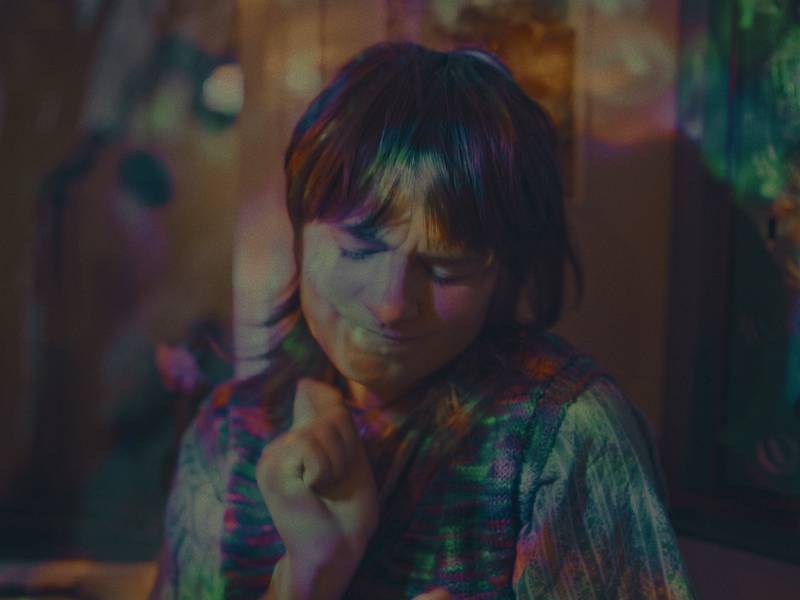

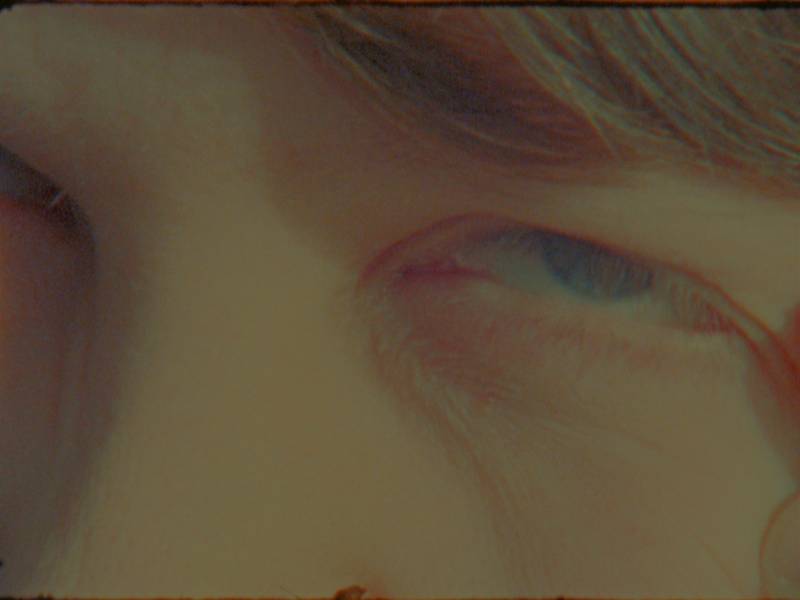

Still from space is quite a lot of things
Image: Louise Hollerup
I feel like that’s what was so beautiful about space is quite a lot of things; it portrayed to me the wonderful nature of conversations about gender among trans people. Could you tell me a bit about your conversations—how did they feel to you when you were filming them?
I had to edit out so many of my reactions as it was just me repeatedly gasping: “What? Really? Wow!” as I was so excited about what my friends were saying. This question about feelings is not part of our discourse around gender; just as you said, we are taught to explain our gender through the moments and ways it clashes with something. I think it’s sad that it leaves so little space for these kinds of conversations about gender. I want to move the discourse toward how wonderful it is to be trans. The discussions around transness are often so much about the suffering, and yet the reality is, for me anyway, that being trans is most of the time just a wonderful thing.
It moved me to think that this is exactly the kind of art and representation of transness that I want to see in the world. Although it’s important to talk about the political structures that cause suffering for them to change, it shouldn’t be the only narrative around transness. I think that this is why the film is political but does it feel comfortable for you to think of it as such?
Well, everything is political; it’s important. But I try to balance my practice between what I think is important to discuss politically and what feels enjoyable for me in life. The topics I end up making films about are those that combine these two things. I think I’m good at describing something by bringing together images, sounds, and words. It’s possible to experience the topics I wish to talk about through the emotions that these associations create.
I think that’s how art at its best can have an effect on the world. It relates to what you were saying about the undefinable that language fails to describe – that change can occur somewhere in that murky area and that transformation becomes possible there.
Yes, there is a significant difference between learning something through language and learning something through our bodies. In the film, I used images and sounds to create a bodily response in the spectators. The grainy super-8 film and foley sounds recoded from a close distance create these layers of texture. I’m so excited about film as a medium; it has such vast possibilities to tell stories through emotions and bodily responses.

I guess that’s what’s so limiting when trying to talk about the experience of being trans. We have to do it with words that were not made from the perspective of being trans. And when you think of all the societal structures we have to operate within, they are all based on that language.
Hmm, I didn’t realise that until you said it; that was so skillfully done in the film and yeah, exactly how I experienced it. It touches on what I said earlier about my experience of gender – that it takes place when I don’t think about it and that I’m most euphoric about my gender among people that make it disappear. I don’t think it’s paradoxical, but it’s tough to put this into words, so it does seem like it. It was moving when you said that you think of space when you think of your gender, and your friend responded: “Space is quite a lot of things.”
Our language is inherently binary. We define things through what something is not – I’m this, I’m not that; ‘man, not a woman’. Maybe if our language were visual, we wouldn’t describe anything through negation; everything would appear as one entity. I think this is purely a problem with language: it claims it’s impossible to experience something simultaneously as existing and not. But of course, it is! We’ve just learned to define things in a certain way. I think I understand my gender better if I imagine, for example, that dreams are real and this world is not.
Like leaving the world of human language completely behind?
Yes! You could also think of this film as trying to leave the whole gender conversation out of it. Because when you strip it to its bones, I was making a film about talking with my friends; that was the focal point for me on this particular project. By doing that, I wanted to make a film FOR trans people. That was one of the inquiries I wrote down for myself initially. I researched trans representation for a long time during my studies and was very disappointed, so it was important for me to break that mould.
Yeah, I thought how important it is for trans youth to see your film. I’m sure that, for example, for myself, it took so long to find my gender because of the representations I saw around transness when growing up. Why would you want to go towards something presented to you as constant suffering?
For sure, there aren’t many films about being transgender that could be shown to children. Luckily, many indie films talk about transness in more varied ways, but not mainstream ones. It might be quite wonderful to interview kids about how they experience gender! I’m sure they’d have some great ideas.
I think so! I’ve had some amazing conversations with one of my kids about gender. When they were four, they told me that instead of words like “boy” or “girl”, they wished everyone at daycare would just refer to them by their name. They also thought for a while that the Finnish word for ‘non-binary’ = ‘muunsukupuolinen’, means ‘mun sukupuolinen’ = ‘my gender’. I think it’s telling how the experience of gender is individual – it should be related to you and nothing else.
Yes, it can be that simple – that it’s me, nothing else.
